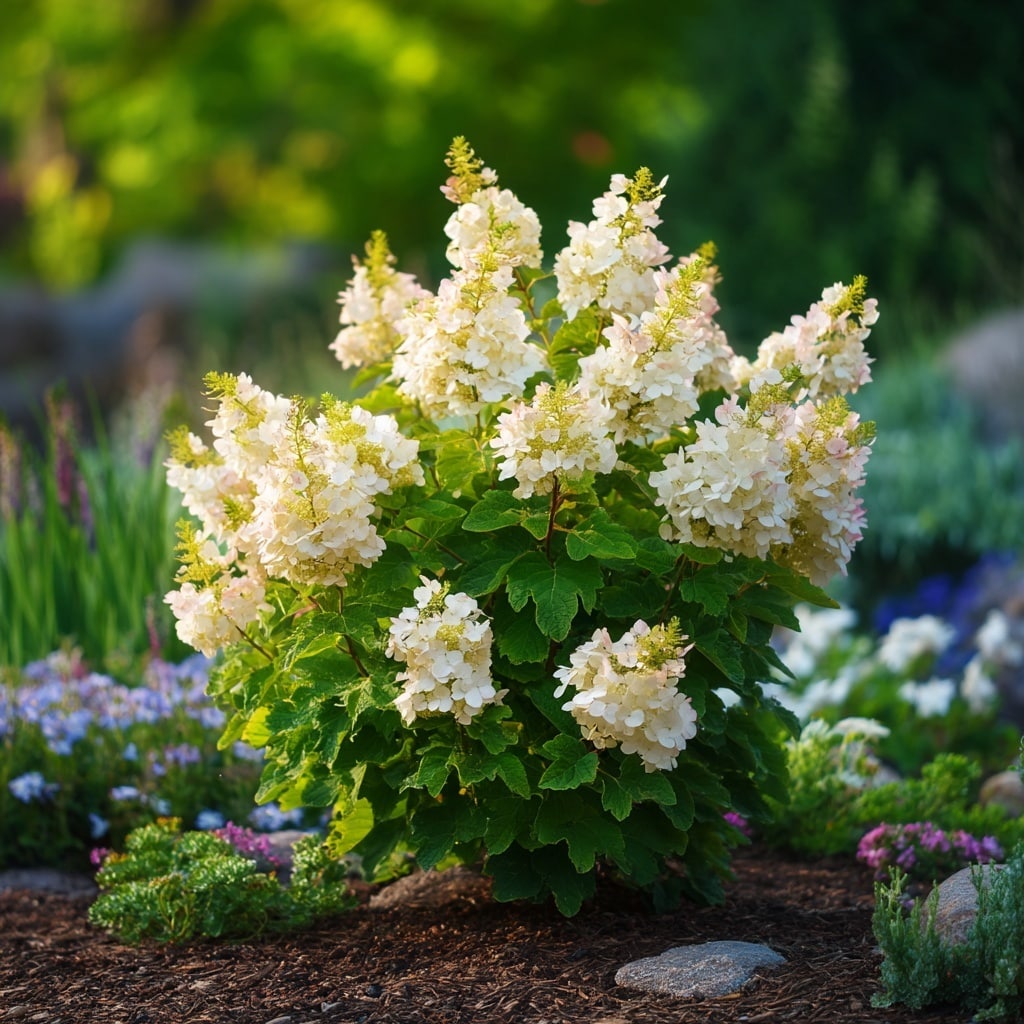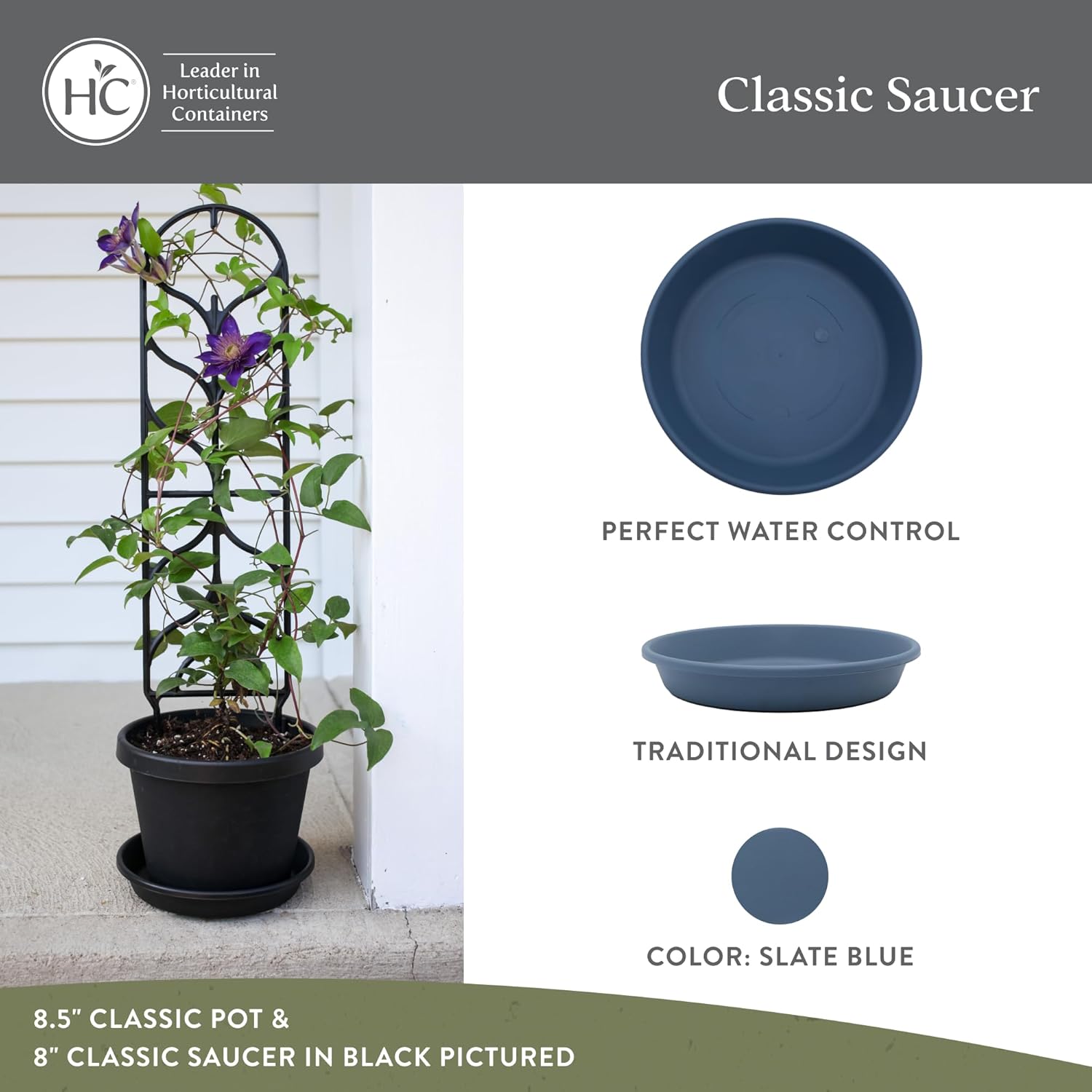Hydrangea is one of the most versatile and eye-catching shrubs you can add to your garden. With their bold blooms, lush foliage, and wide range of sizes and colors, hydrangeas fit seamlessly into nearly any landscape design. Whether you’re working with a small garden bed or a large yard, these flowering shrubs offer texture, seasonal interest, and curb appeal. This guide will walk you through five beautiful ways to use hydrangea in your landscaping this year—perfect for refreshing your space with color and elegance, without overcomplicating your design. From statement plantings to subtle borders, you’ll find ideas that suit your garden style and growing conditions.
Table of Contents
1. Single Plantings
If you’re aiming to make a bold statement in your yard, using a single hydrangea as a focal point can be incredibly effective. One well-placed shrub in a garden bed can become the star of the landscape, especially when paired with low-growing perennials or annuals that contrast with its bold foliage and blooms.
For standout single plantings, oakleaf hydrangeas are a top choice. These native shrubs grow large and deliver year-round interest—with summer flowers that shift colors, stunning fall foliage, and dried blooms that hold their shape into winter. Another favorite is the panicle hydrangea, which can be pruned to grow like a small ornamental tree, adding vertical structure and seasonal flair.
Keep your design simple, and let the hydrangea’s beauty speak for itself.
2. Groupings
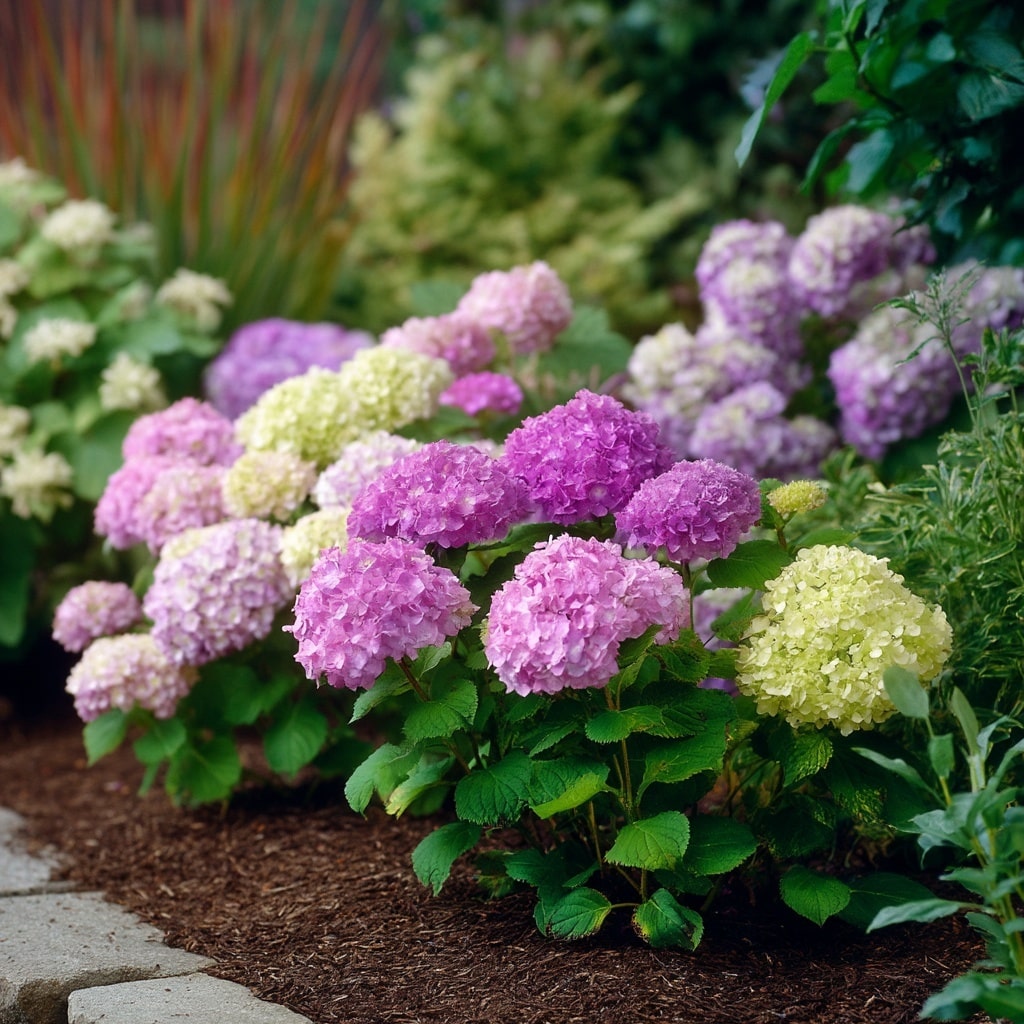
Planting hydrangeas in groups is a time-tested technique that brings harmony and fullness to garden beds. When several shrubs grow together, their overlapping foliage and clustered blooms create a lush, cohesive look that feels both intentional and naturally elegant.
For best results, stagger the placement of smaller hydrangea varieties rather than lining them up. This layout mimics how plants grow in nature and helps fill in empty spaces as the shrubs mature. Following the Rule of Three in landscape design—planting in odd-numbered groups—can create a more visually appealing rhythm as the eye moves across your yard.
Using similar or complementary bloom colors in groupings adds impact, while varied heights and leaf textures keep things interesting throughout the growing season.
3. Foundation Plantings
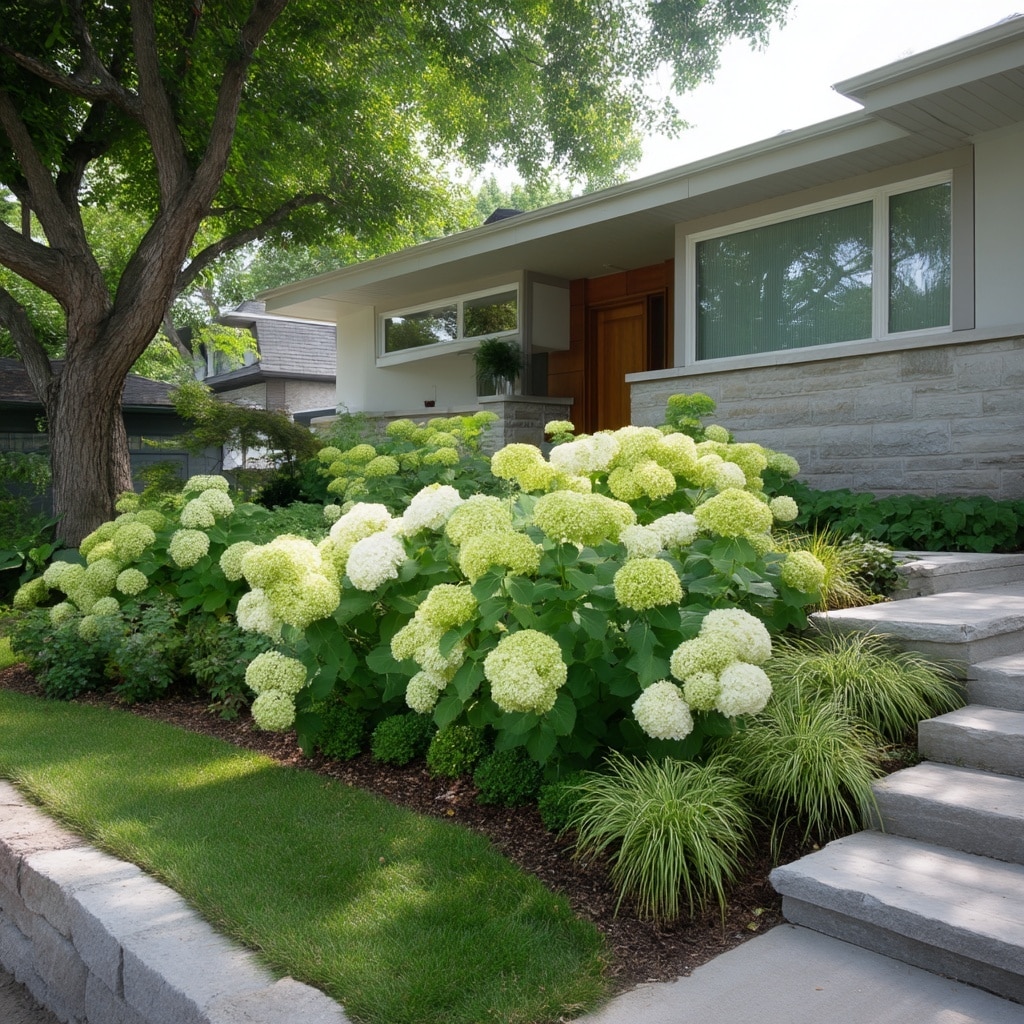
Using hydrangeas as foundation plants is a smart and stylish way to enhance your home’s curb appeal. These shrubs provide softness and structure along the base of your house without overwhelming windows or architectural features—especially if you choose compact varieties.
Smooth hydrangeas are an excellent fit for foundation beds. Their rounded shape and large, pom-pom-like blooms add charm while staying within manageable heights. These types thrive in partial shade and won’t block natural light, making them ideal for planting close to walls or beneath windows.
To create a balanced look, layer in smaller perennials or evergreens in front of your hydrangeas. This tiered planting style not only improves visual depth but also supports year-round interest.
4. Borders

Though often overlooked, hydrangeas make excellent border plants—offering both beauty and function. Their full, leafy growth and abundant blooms form a natural screen that can define garden edges, pathways, or property lines without feeling too rigid.
For low, decorative borders, opt for dwarf hydrangea varieties that stay compact while still producing vibrant flowers. If privacy is the goal, consider larger types like the oakleaf hydrangea, which can grow tall enough to act as a living hedge.
One advantage of using hydrangeas for borders is their minimal maintenance. While they generally maintain an attractive shape on their own, a bit of light pruning can help refine their form. With thoughtful placement, hydrangea borders can soften hardscapes and guide the eye through your garden.
5. Vertical Planting
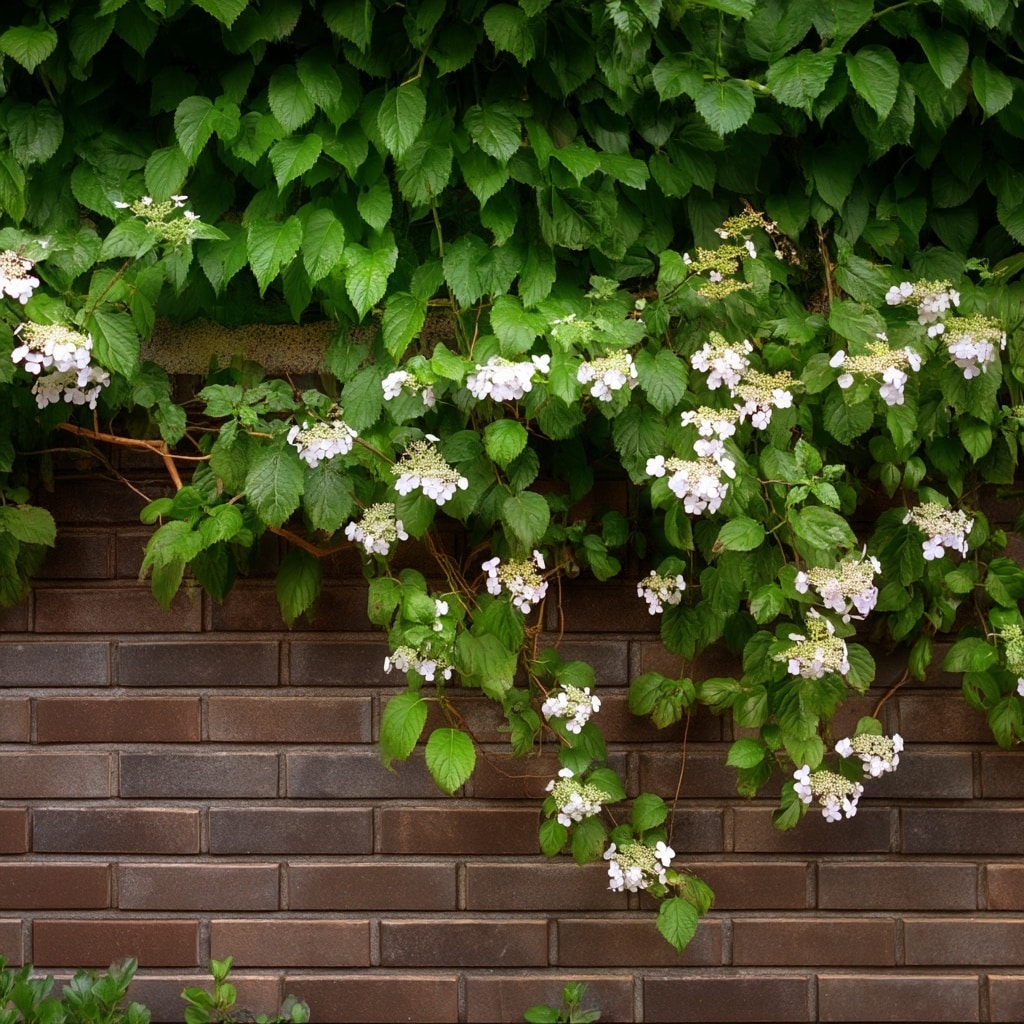
Not all hydrangea varieties are confined to the ground—some can climb. Climbing hydrangeas (Hydrangea anomala) are a stunning and underutilized option for vertical gardening, perfect for adding dimension to walls, fences, or arbors.
This unique variety attaches itself to surfaces using aerial rootlets and gradually spreads upward, producing elegant, lacy white flower clusters that soften and brighten vertical spaces. Though it’s slower to establish than shrub forms, the payoff is a graceful, cascading effect that adds structure and visual interest.
Use climbing hydrangeas to cover less attractive walls or to frame entrances and seating areas. Just ensure they have enough support and room to grow over time. Their ability to transform flat surfaces into living backdrops makes them a standout in layered landscape design.
What to Plant With Hydrangeas

Creating a well-balanced garden means thinking beyond your main shrubs. Pairing hydrangeas with the right companion plants can elevate their beauty and ensure a healthier, more visually dynamic landscape.
Start by placing hydrangeas first, then fill in around them with smaller plants that thrive in similar conditions—namely partial shade and moist, well-draining soil. For perennial companions, hostas are a classic match. Their broad leaves create a rich contrast to hydrangea blooms, while daylilies add bright pops of color and vertical shape.
Azaleas make great neighbors in mixed beds, especially in spring, when their early flowers extend the blooming season. If you’re planting annuals, go for begonias or impatiens, which flourish in shady spots under larger shrubs. Ferns are another great choice, adding fine texture and a woodland feel.
Carefully layering these companions ensures year-round interest, better use of space, and a more cohesive garden aesthetic.
Frequently Asked Questions (FAQs)
Where should you not plant hydrangeas?
While hydrangeas are adaptable, they dislike soggy soil. Avoid planting them in low-lying spots or areas where water tends to collect. Consistently wet roots can lead to rot and other health issues. Also, steer clear of spots directly under large trees, where hydrangeas would have to compete for moisture, light, and nutrients.
How do you lay out hydrangeas in the garden?
Start by understanding the mature size of your chosen hydrangea variety. For shrub types, spacing plants 3 to 4 feet apart allows airflow and healthy growth. If you’re aiming for a hedge or border, plant them in a straight line for a formal look, or stagger them for a softer, natural feel. Always consider sunlight exposure—most hydrangeas do best in morning sun and afternoon shade.
Conclusion
Whether you’re creating a focal point, softening the edges of your home, or adding height with vertical blooms, hydrangeas offer endless design flexibility. Their stunning flowers, varied forms, and ease of care make them one of the most rewarding choices for any landscape. With just a little planning, you can use hydrangeas to transform your yard into a space that feels lush, colorful, and inviting from spring through fall.



